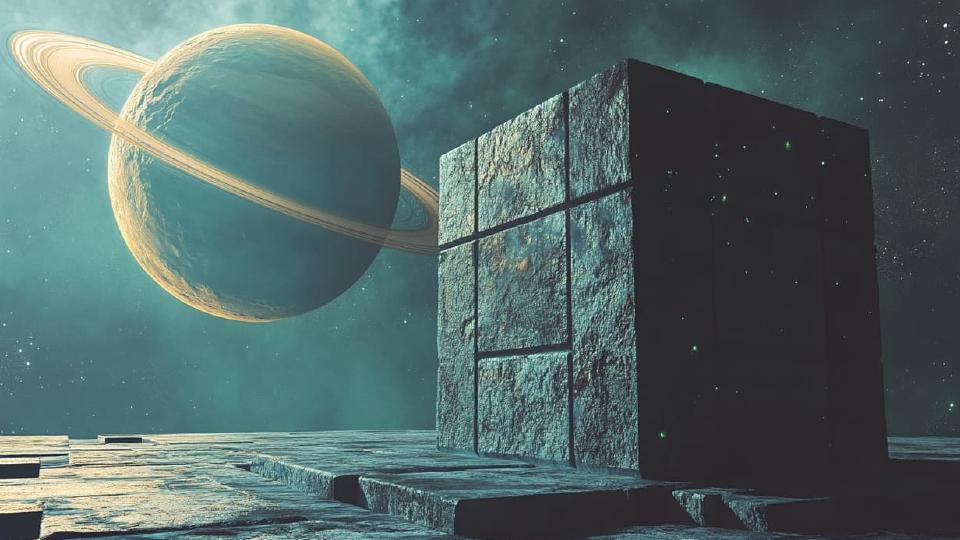
The Cube: The Sacred Geometry of Stability and Manifestation
The cube is a timeless symbol of structure, foundation, and material reality. With its six equal faces and right angles, it represents stability and manifestation, anchoring energy into form. Unlike the tetrahedron, which embodies transformation, the cube holds and contains, serving as the geometric essence of Earth—solid, enduring, and unshaken.
From megalithic temples to Platonic philosophy, the cube has been revered as a cornerstone of existence. Mystical traditions associate it with the physical plane, the four cardinal directions, and the framework of reality. Yet within its rigid symmetry lies a paradox: the cube is both a container of limitation and a key to transcendence.
The Cube in Sacred Geometry and Alchemy
In classical element theory, the cube is the Platonic solid of Earth—dense, structured, and tangible. This symbolism extends into alchemy, where it represents crystallization, the final stage in the transformation of formless energy into physical reality.
Sacred architecture across the world employs the cube as a fundamental structure. From Egyptian temples to Gothic cathedrals, the cube serves as a foundation for holy spaces. In Freemasonry, the ashlar stone—a rectilinear stone that can be shaped into a perfect cube—symbolizes the refined individual, shaped through discipline and mastery.
Meditating on the Cube
Working with the cube fosters order, stability, and grounded awareness. Esoteric traditions emphasize that spiritual evolution must be built upon a solid foundation—before ascending to higher wisdom, one must master the physical and material realm.
The Hidden Duality: The Cube as Both Prison and Portal
In its mundane aspect, the cube can be a box—a symbol of confinement. It represents limitation, the constraints of physicality, and the rigid boundaries of perception. This is the cube of Saturn, associated with time, structure, and karma, binding existence within fixed frameworks.
However, the cube is not merely a prison—it is also a key. In alchemy and mysticism, it is a vessel of transformation, containing the hidden order of reality. The Kaaba in Mecca and the Philosopher’s Stone both reflect this duality, suggesting that proper understanding of the cube reveals a path to wisdom and transcendence.
Gnostic and Hermetic Perspectives: Some esoteric traditions, particularly Gnostic thought, associate the cube with the material prison of the Demiurge, a force that traps souls in physical existence. From this perspective, the cube’s rigidity reflects the illusion of limitation, and its mastery represents the soul’s liberation.
The Cube and Higher Dimensions
Beyond its three-dimensional form, the cube has an esoteric connection to higher-dimensional space. The tesseract, or hypercube, is the four-dimensional extension of the cube. This hints that what appears as limitation in three dimensions is actually a gateway to higher states of being.
This idea is echoed in the works of P.D. Ouspensky and Rudolf Steiner, who suggest that higher-dimensional space represents consciousness beyond material perception. The unfolding of the cube into a cross is another esoteric motif, suggesting that mastery of form leads to transcendence beyond it.
Pathworking with the Cube
Engaging with the cube in spiritual practice can take many forms:
- Meditating Within a Cube – Visualizing oneself inside a cubic structure enhances stability, discipline, and manifestation ability.
- Constructing a Cubic Altar – Arranging sacred objects in a cube formation amplifies grounding and solidifies intention.
- The Ascending Cube Meditation – Visualizing the cube unfolding into a tesseract symbolizes expansion beyond material constraints.
- The Black Cube Contemplation – Reflecting on the duality of the black cube—as both prison and key—reveals insights into material existence and spiritual liberation.
The Emperor and the Cube: The Throne of Stability and Manifestation
Pathworking with the cube is an immersion into the architecture of reality itself. Unlike the tetrahedron, which fuels fire and transformation, the cube enforces order, stability, and mastery over form.
In the Hermetic Tarot, the Emperor (IV) embodies rulership, authority, and dominion over the material realm. His throne is a cube, symbolizing mastery over structure. To engage in cube pathworking is to step into the Emperor’s domain, confronting both the responsibility and power that come with manifesting form.
Astrological Clarification: The Emperor is traditionally ruled by Aries (Mars), the force of will and sovereignty. However, his connection to Saturn is implied in his role as lawgiver and architect, making the cube a fitting esoteric throne for his authority.
The Cube as a Trial: Confronting Saturn’s Law
The cube is also linked to Saturn, the force of boundaries, discipline, and karma. While the Emperor is a ruler, he is also bound by the laws he upholds. In this way, the cube becomes both a throne and a trial—a test of whether one can wield power without succumbing to tyranny or rigidity.
If the cube pathworking feels oppressive, it may indicate:
- Resistance to Responsibility – A struggle against the discipline needed to manifest one’s vision.
- Fear of Limitation – A reluctance to commit to form, fearing that choice restricts freedom.
- Avoidance of Structure – An attachment to chaos over order, preventing true mastery.
The lesson of the Emperor and the Cube is that freedom is not the absence of structure—it is the ability to wield structure wisely.